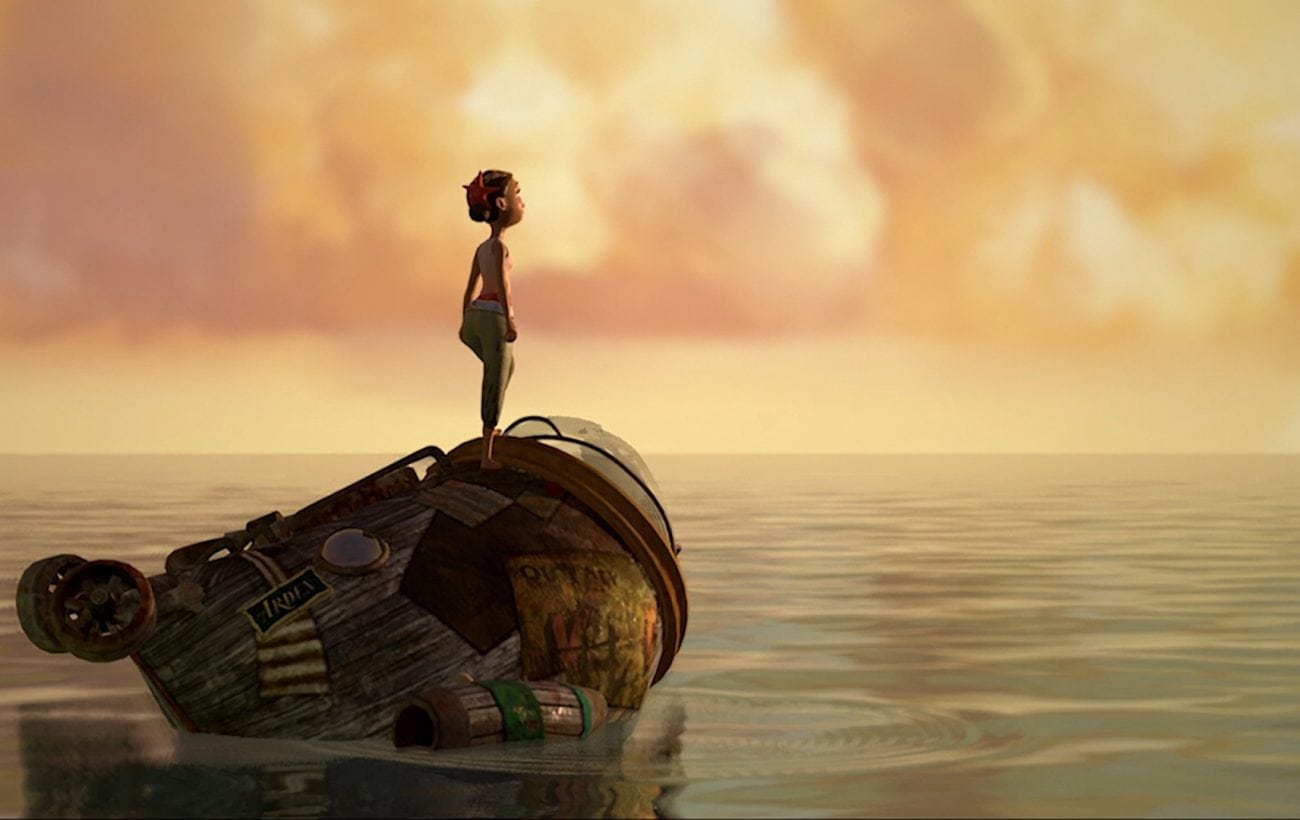Oh, how long the wait. If only you heard me sigh: finally, it’s here. Penrose Studio’s new VR film, Arden’s Wake, has arrived — this is one title you do not want to miss. It is a tearful family story; a dive into uncertain depths.
What a puppet show: Of cloud villages and castles in the water
Do you still recall Allumette? That enchanting VR film of a mother and her daughter living in the clouds? With Allumette and their debut film The Rose and I, the California-based production company behind it, Penrose Studios, had invented a new style of VR animated film.
Those Penrose productions were among the first to develop the aptly named dollhouse style. Perhaps they even invented it: tiny characters bustling before me, the gigantic VR user, in their cute little worlds. By now, VR films frequently feature the dollhouse style. At times, I almost regret this, as too much looking-into-little-worlds runs the risk of hurting immersion. Watching passively instead of engaging and being part of the action.
I am all the more happy that Arden’s Wake has finally released after a seemingly endless wait. It was as early as 2017 that the film’s first chapter debuted at the Tribeca Film Festival in New York; the same chapter that won a lion at the Venice Film Festival of the same year. The second chapter, Tide’s Fall, followed a year later, also at Tribeca. I was there, and like most others, absolutely enthralled.
With good reason, as Penrose Studios demonstrated exactly how to successfully tell an immersive story with this VR film — despite the dollhouse format (or maybe because of it).
The peek-and-discover-principle: Arden’s Wake can be experienced from different perspectives
Arden’s Wake takes place in a world full of water. In this vast ocean, a round little wooden house sits on very long stilts that are anchored to the seabed. Its roof supports a lighthouse, and the lighthouse’s beacon makes its rounds with a squeak every now and then. Everything appears idyllic — like a place you’d happily call your own. A young girl can be seen fishing from the jetty. Her name is Meena, and together with her father she lives in this house on stilts.
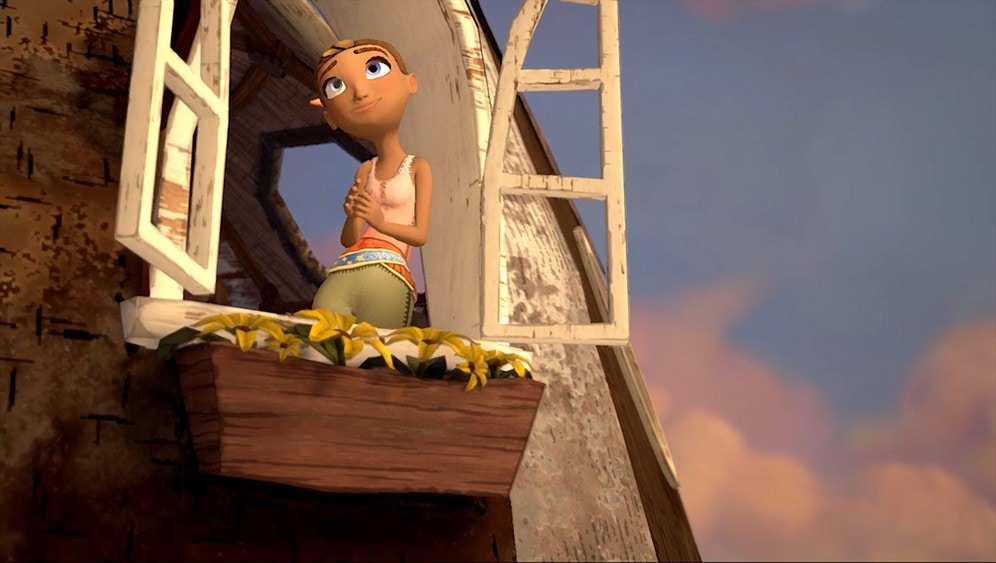
Zooming closer — apropos, tracking shots in VR were still uncharted territory in 2017 — more and more details of the house come into view. And when Meena takes her haul of fish, gets up and goes inside, it dawns on you: something’s going on in there.
Full of curiosity, I poke my head in to follow the story inside. And so, I have a choice: should I watch Meena’s lovestruck admirer on his motorboat, trying to woo the young lady? Or would I rather catch her father getting upset about his daughter pining for the young Romeo through the window?
This narrative form — which I’ll dub the peek-and-discover-principle — Penrose Studios has already tried with Allumette and the cloud ship. Incidentally, it is also the reason why I have been poking my head into all sorts of objects since (and coming out disappointed most of the time). Although Arden’s Wake is not interactive and only offers a spectator role, the film lets users participate in a unique way — the breadth of perspectives makes the VR film much more engaging than if the scenes had only been shot from a single viewpoint.
Maximum immersion — despite miniaturization
This idyl — surprise! — does not last, though. As the story moves on, you recognize the skeletons of buildings underwater, former skyscrapers. The result of climate change? A catastrophe of enormous scale? What happened to those who lived here? A kind of apocalyptic mood descends over the narrative; the questions, however, remain unanswered.
Already the prolog hints that the seemingly careless life of Meena and her father covers a deeper tragedy: the first minutes of the VR film take place underwater. Far beneath the surface, you see scraps of a boat sinking to the depths. It seemed so real, I wanted nothing more than to grab those pieces and bring them back to the surface with my own hands.
Yet the scene does not end with sinking scraps. After some tense minutes underwater, I see two people being pulled down before my eyes: a woman and her daughter, both unconscious and drowning. Then, rescue approaches: a man dives in from above — Meena’s father — but they have sunken too deep. The father must decide, only managing to pull his little daughter up to safety with his last strength.
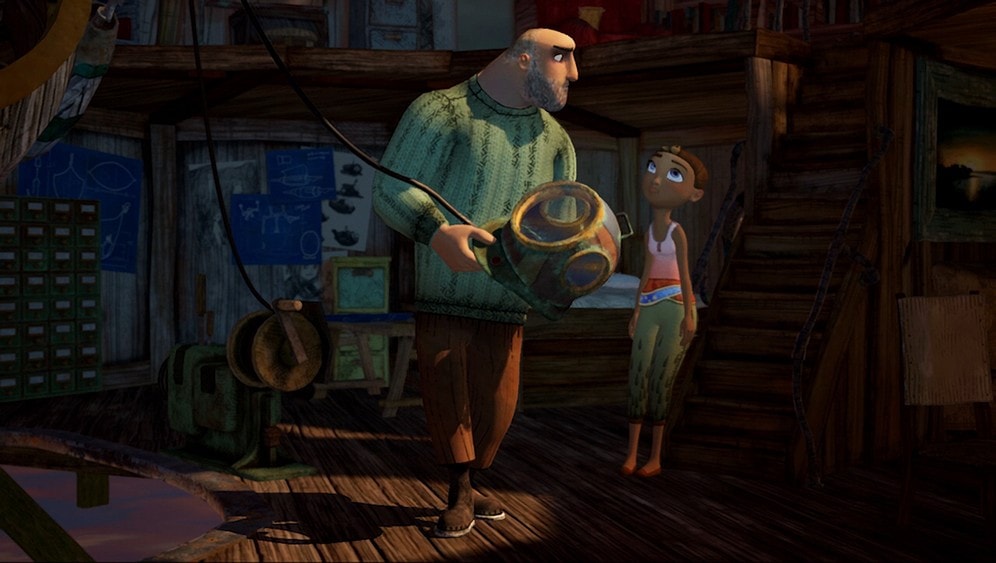
The scene is sublime. Admittedly, it is incredibly sad; but the slow, dramatic narrative escalates to show that — unlike other VR films in the dollhouse style — Arden’s Wake was created with maximum immersion in mind. The accompanying music spurs the drama and the very convincing underwater soundscape makes me gasp for air subconsciously.
This is where I, the sceptic, become aware of the narrative advantages of the dollhouse style — provided it is used purposefully: exactly because the world is significantly smaller, the enormity of the ocean appears more menacing, the house becomes more exposed, and the people inside are more vulnerable.
While the scale is based on the dollhouse style, the decision to not to go as tiny as in Allumette or other dollhouse VR films like Minimum Mass or Feather definitely helps.
The art of retrospection in VR
From a dramaturgical standpoint, Arden’s Wake features another especially exciting aspect. As evidenced in the prolog: the VR film plays with the past and the present. What happened in the past is shown right at the start and is expanded throughout the course of the film by means of a clever trick (see below).
Thus far, I have only ever spotted this type of achronological storytelling in Lucid. Some VR games also feature flashbacks, for example Resident Evil 7. However, there, the experienced player simply pushes a videocassette into a recorder — it lacks this kind of seamless flow with the overall narrative.
Similarly, The Great C dabbles with retrospectives, even boldly featuring a parallel montage, which actually turned out quite good. However, this montage only exists to maintain suspense, not evoke an emotional response in the form of a personal connection to the characters. This is what Arden’s Wake succeeds at with its retrospectives.
Alright, so you know: I cried a river throughout Meena’s adventure. The story is an emotional rollercoaster that can keep up with anything coming from Hollywood. Admittedly, ever since I myself became a mother, tears have been flowing more freely whenever children and their parents are at play.
A home-run: the emotional proximity to the protagonist
Over the course of the film, the two main characters’ lives take their course. But then, the father does not return from one of his routine dives, and Meena is forced to make a tough decision. She chooses to follow him into the darkness of the water using his self-engineered submarine. The depths await Meena with secrets of their own.
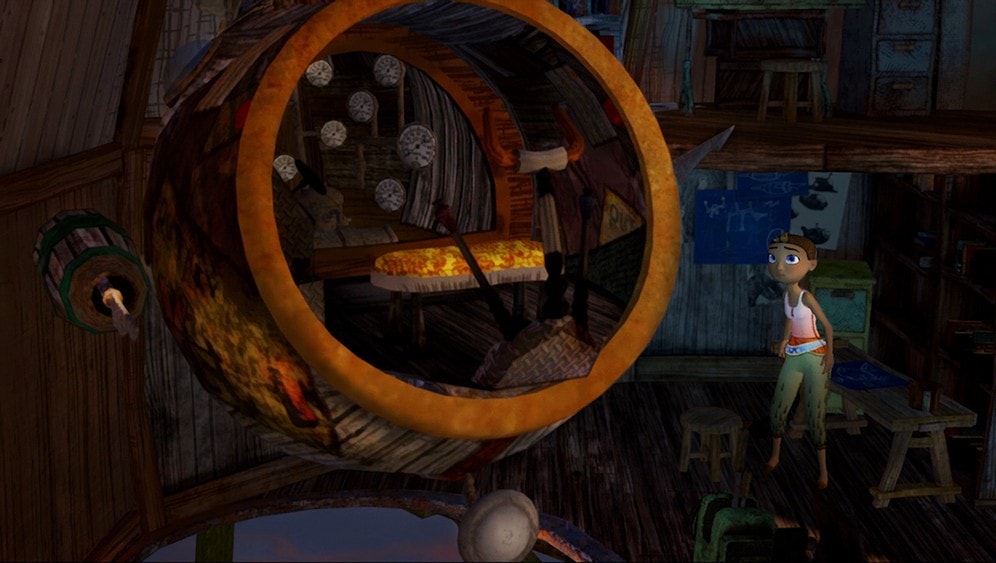
Similarly to Lucid, more and more details from the past emerge, answering many questions revolving around the protagonists’ present situation. Arden’s Wake uses the same narrative principle as Lucid: by turning inward and into the subconscious, the protagonist experiences her suppressed memories anew. This allows us to get increasingly familiar with Meena and her father.
The outstanding performances given by the two voice actors speaking for Meena and her father certainly supported this emotional accessibility: Oscar winner Alicia Vikander’s slightly coarse and cheeky voice transforms Meena into the adventurer she needed to become, while Meena’s father, spoken by Richard Armitage, is entirely lovable despite all of his flaws. I wanted to give him a hug anytime I saw him.
My cry of desperation: the ending of Arden’s Wake is… well, what?
The closer we get with the characters, the deeper we dive into the story (quite literally), the more intensely we need to hear the end of the story. Will it all work out? In the case of Arden’s Wake, I can only give a shrug. Yet again, I almost feel compelled to say, as many VR films seem to show their biggest weaknesses in one of the most important storytelling ingredients: the ending.
With Arden’s Wake, my neighbors might have heard my desperate cry through the walls, “What?! Why?! What now?”
The plots ends with a cliffhanger — at least that’s my interpretation. With a lot of goodwill, you could see it as an open ending; yet it stands to reason that there must have been plans for at least another chapter to follow. Back in 2017, the director Eugene Chung spoke of a VR series (source). Will it still happen? Doubtful. Penrose has left an according inquiry unanswered (at the time of publication).
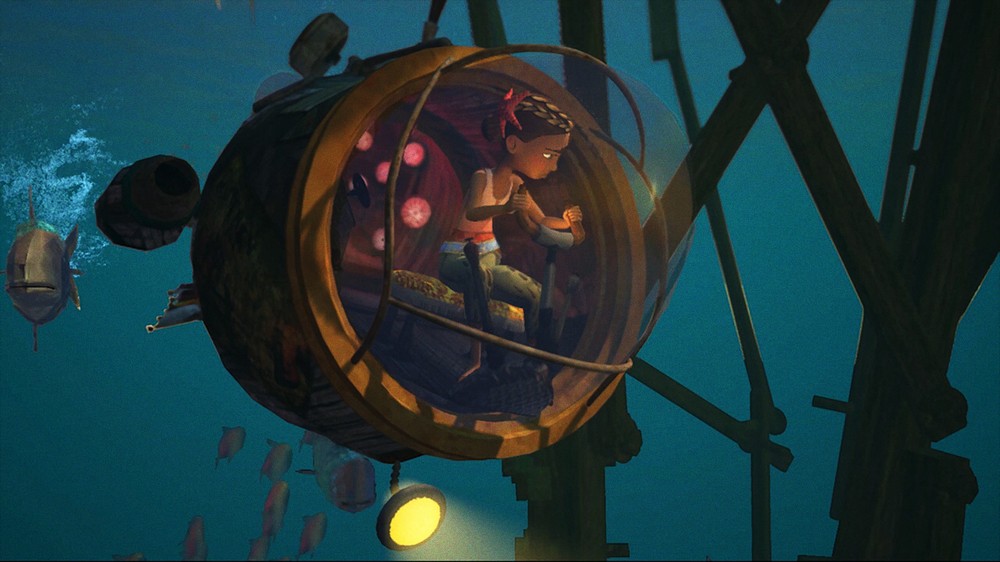
Even if I might occasionally complain about the endings of VR films, I cannot leave this unsaid: content production in VR, not to mention that of high quality, remains an immense challenge for all those involved. A big thank you to all of you wonderful creative pioneers!
Conclusion of Arden’s Wake: one of the best VR films — despite the ending
Certainly, I would love to see a further instalment of Arden’s Wake. The VR film’s intensity, its accomplished narrative style filled with tension and emotion, the love with which the detailed world was built over many years — all of these ingredients make Arden’s Wake one of the best VR films currently available.
Another small, but touching detail that — once more — made me well up: in the credits, the people behind the film show their own family pictures. Parents with their children, beaming baby faces, kids’ faces smeared with ice cream at play. It’s a pleasing and intimate conclusion. The message is — if you read between the lines — this VR film is our baby, too. Please love it — I do!
Where can I watch Arden’s Wake?
The VR film has been available on the Oculus Store for the Oculus Rift since mid-February 2021 and costs 7.99 Euros. It runs about 30 minutes. Arden’s Wake has also released on Steam for the HTC Vive, Oculus Rift and Valve Index on the 26th of February.
Translated by Jan McGreal

